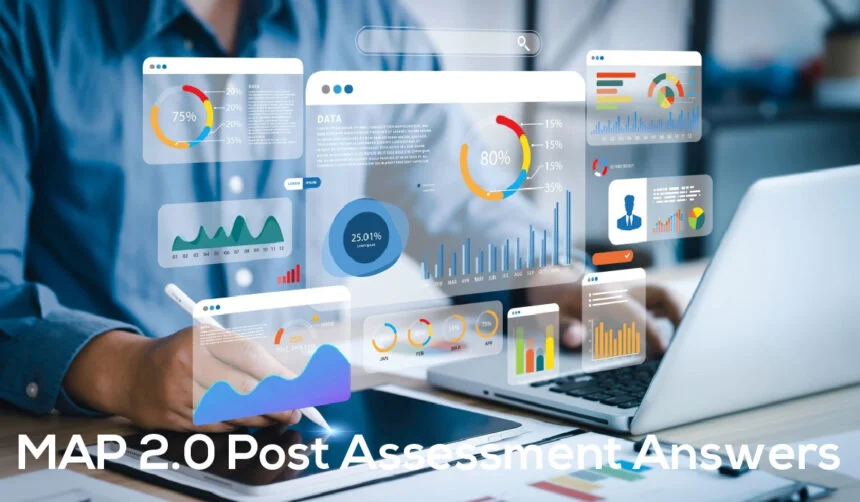Your Complete Guide to TD Auto Finance
Navigating the world of car loans can feel overwhelming, but it doesn’t have to be. Whether you’re buying your first car, upgrading your family vehicle, or simply exploring your options, understanding how auto financing works is the first step toward a confident purchase. Lenders like TD Bank offer financing solutions that help millions of people get behind the wheel. This guide will walk you through everything you need to know about the process, from application to final payment, with a focus on what to expect from a major lender like td auto finance.
We’ll break down complex topics into simple, easy-to-understand sections. You’ll learn about applying for loans, managing your account online, understanding interest rates, and what to do if you hit a financial bump in the road. Think of this as your friendly roadmap to the car financing journey.
Key Takeaways
- Financing is a Partnership: Lenders and dealerships often work together. You might secure a loan directly from a bank or get financing arranged by the dealership through a partner like td auto finance.
- Your Credit Matters: Your credit score is a major factor in determining your interest rate and loan terms. A higher score generally means better offers.
- Digital Tools Are Your Friend: Most lenders offer robust online portals and mobile apps to manage your loan, make payments, and access important documents.
- Understand the Full Cost: Your loan includes the principal (the car’s price) plus interest and any applicable fees. Always review the total cost of borrowing before signing.
- Flexibility Exists: Options like refinancing or changing your payment date may be available if your financial situation changes. Communication with your lender is key.
Understanding the Role of a Lender in Car Buying
When you decide to buy a car, most people don’t pay the full price in cash. Instead, they get a loan from a financial institution to cover the cost. This institution is the lender. The lender pays the dealership for the car on your behalf, and you agree to pay the lender back over a set period, with interest. This arrangement is what we call auto financing.
A major player in this space is td auto finance, which is the vehicle financing and leasing division of TD Bank. They don’t typically offer loans directly to consumers. Instead, they partner with a large network of car dealerships across the country. When you go to a participating dealership and apply for financing, the dealer may submit your application to several lenders, including TD Bank. If you are approved and choose their offer, your loan will be managed by them. This type of lending is known as indirect auto lending because the dealership acts as the intermediary. It’s a common and convenient way to secure financing right at the point of sale, saving you the step of getting pre-approved from a bank separately.
What is Indirect Auto Lending?
Indirect auto lending is the standard process at most car dealerships. It simplifies the car-buying experience by rolling the vehicle purchase and the financing application into one seamless transaction.
Here’s how it works:
- You find the car you want to buy at a dealership.
- You fill out a credit application provided by the dealership’s finance and insurance (F&I) department.
- The dealership sends your application to its network of partner lenders.
- Lenders review your application and, if you’re a good candidate, they send back a loan offer with specific rates and terms.
- The dealership presents you with the best offer, or sometimes a few options to choose from.
- If you accept an offer from a lender like td auto finance, you sign the paperwork at the dealership, and they become your lender for the life of the loan.
This model is efficient because it allows you to shop for a car and a loan at the same time. The dealership does the legwork of finding a willing lender, which can be especially helpful if you have a unique credit situation.
How to Get Started with Dealership Financing
Beginning the financing process at a dealership is straightforward. The most important thing you can do is arrive prepared. Before you even visit the lot, it’s wise to have a good understanding of your budget and your credit standing. You can get a free copy of your credit report from the major credit bureaus annually. Knowing your score helps you anticipate what kind of interest rates you might be offered.
When you’re at the dealership and ready to talk numbers, you’ll be asked to fill out a credit application. This form requires personal information, including your full name, address, date of birth, and Social Security number. You’ll also need to provide details about your employment and income, such as your employer’s name, your job title, and how much you earn. Lenders use this information to assess your ability to repay the loan. Having recent pay stubs and proof of address handy can speed up the process significantly. The finance manager will then use this information to seek loan approval from their lending partners. It’s a pivotal moment, as the offers you receive will shape your monthly payments for years to come.
What Documents Will You Need?
Being prepared with the right documents can make the financing process smooth and quick. While requirements can vary slightly between dealerships and lenders, you should generally expect to provide the following items.
- Valid Driver’s License: This confirms your identity and is legally required to drive the car off the lot.
- Proof of Income: Lenders need to verify that you can afford the monthly payments. Recent pay stubs (usually the last two) are standard. If you’re self-employed, you may need to provide recent tax returns or bank statements.
- Proof of Residence: A utility bill, bank statement, or lease agreement with your name and current address is usually sufficient. This confirms where the vehicle will be registered.
- Proof of Car Insurance: You cannot drive a financed car off the lot without having active car insurance. Bring your insurance card or the policy declaration page.
- Trade-in Documents: If you are trading in your old car, you’ll need its title and registration. If you still have a loan on the trade-in, bring your loan account information.
Gathering these items before you head to the dealership will show the finance manager you are a serious and organized buyer, potentially leading to a better and faster experience.
Managing Your Account Online
Once your loan is finalized and you’ve driven your new car home, your relationship with the lender begins. A lender like td auto finance provides customers with digital tools to manage their loans conveniently. The primary tool is usually an online account portal, which you can access from a computer or a mobile app. Setting up your online account should be your first step after receiving your welcome packet, which typically includes your account number and instructions for registration.
Through your online account, you can perform a variety of essential tasks without ever needing to pick up the phone. You can view your current balance, see your next payment due date, and review your payment history. This transparency is crucial for staying on top of your loan. You can also access important documents, such as your original loan agreement and yearly statements for tax purposes. Many lenders use these portals to send important notifications, so checking it regularly is a good habit. These digital platforms are designed to empower you, giving you full control and visibility over your auto loan from anywhere, at any time.
Key Features of a Digital Loan Portal
A modern loan management portal offers much more than just a place to see your balance. It’s a comprehensive hub for your entire loan experience. Here are some of the most valuable features you can typically expect:
- Payment Management: Set up one-time payments or enroll in automatic payments (AutoPay). AutoPay is a popular option because it ensures you never miss a due date, which is great for your credit score. You can usually choose the payment source, such as a checking or savings account.
- Account Details at a Glance: A dashboard will show your original loan amount, the remaining principal balance, your interest rate, and the estimated payoff date. This helps you track your progress.
- Document Center: This is a digital filing cabinet where you can download and print your monthly statements, year-end interest statements, and other official correspondence from your lender.
- Payoff Quotes: If you’re thinking about paying off your loan early, you can generate an official payoff quote. This tells you the exact amount needed to close your account on a specific date, including any accrued interest.
- Communication Hub: Some portals include a secure messaging center to contact customer service with questions about your account, providing a documented record of your conversations.
Understanding Your Payment Options
When it comes to paying your car loan, lenders offer several methods to provide flexibility and convenience. The most common and recommended option is automatic payments, often called AutoPay. By enrolling in AutoPay, you authorize the lender to automatically withdraw your monthly payment from your bank account on the due date. This “set it and forget it” approach helps ensure your payments are always on time, which is crucial for building a positive payment history and protecting your credit score.
If you prefer more manual control, you can make one-time payments each month through the online portal or mobile app. This allows you to pay on a date that works for you (as long as it’s before the due date) and from different bank accounts if needed. Other options often include paying by phone, which may sometimes involve a small processing fee, or mailing a physical check or money order. When mailing a payment, always include your loan account number and send it several days before the due date to account for mail delivery times. Understanding all the available payment methods from your lender, like those offered for a td auto finance loan, allows you to choose the one that best fits your financial habits.
Comparing Common Payment Methods
Choosing the right payment method depends on your personal preferences for convenience, control, and cost. Here is a simple comparison of the typical options:
|
Payment Method |
Convenience Level |
Potential Fees |
Speed of Processing |
Best For |
|---|---|---|---|---|
|
AutoPay |
High |
None |
Instant (on due date) |
Those who want to avoid late payments automatically. |
|
Online One-Time |
High |
None |
Instant |
Those who want control over when payment is sent. |
|
Mobile App |
Very High |
None |
Instant |
Making payments on the go. |
|
Phone Payment |
Medium |
Possible |
Instant |
People who prefer speaking to an agent. |
|
Mail-in Check |
Low |
None |
Slow (2-7 days) |
Individuals who prefer traditional payment methods. |
Ultimately, digital payment methods like AutoPay and online payments are the most efficient and reliable. They minimize the risk of human error, such as forgetting to send a check, and provide an instant digital receipt for your records.
What Happens if You Have Trouble Making Payments?

Life is unpredictable, and sometimes financial challenges can make it difficult to keep up with your bills, including your car payment. If you find yourself in a situation where you might miss a payment, the most important thing to do is to be proactive and communicate with your lender immediately. Ignoring the problem will only make it worse, leading to late fees, negative credit reporting, and potentially even vehicle repossession.
Lenders understand that people can face temporary hardships, such as a job loss, medical emergency, or unexpected expense. Many, including large institutions that manage loans like td auto finance, have programs in place to assist customers who are struggling. When you contact them, be prepared to explain your situation honestly. They may be able to offer a temporary solution, such as a payment deferment. A deferment allows you to skip one or more payments, which are then added to the end of your loan term. While interest may still accrue during this period, it can provide the breathing room you need to get back on your feet without falling into delinquency. Open communication is your strongest tool in these situations.
Exploring Hardship Assistance Programs
When you reach out to your lender about financial difficulties, you can inquire about their specific hardship assistance programs. These programs are designed to provide temporary relief and prevent your account from becoming seriously delinquent.
Here are some potential options your lender might offer:
- Payment Deferment: As mentioned, this allows you to postpone one or more monthly payments. This is a common solution for short-term financial setbacks. You’ll need to formally apply, and approval is based on your account history and current situation.
- Forbearance: Similar to deferment, forbearance is an agreement to temporarily reduce or pause your payments. The terms can be more flexible, but interest almost always continues to accumulate, increasing the total cost of your loan.
- Loan Modification: In rarer cases involving long-term financial changes, a lender might agree to modify the terms of your original loan. This could involve extending the loan term to lower your monthly payments. This is a significant change and is not offered by all lenders or in all situations.
It’s crucial to get any approved assistance plan in writing and fully understand its terms before you agree to it. Understand how it will affect your future payments and the total amount of interest you will pay over the life of the loan.
Credit Scores and Auto Loan Applications
Your credit score is one of the most important factors that lenders consider when you apply for an auto loan. It’s a three-digit number that summarizes your credit history and helps lenders predict how likely you are to repay your debts. The higher your score, the less risk you appear to be, which typically translates into better loan offers. A strong credit score can unlock lower interest rates, saving you hundreds or even thousands of dollars over the life of your loan.
Lenders like td auto finance look at your FICO Score or a similar credit scoring model when evaluating your application. They don’t just see the number; they see the history behind it. This includes your payment history (do you pay bills on time?), your credit utilization (how much of your available credit are you using?), the length of your credit history, and the types of credit you have. If you have a thin credit file (not much history) or a history of late payments, you may be approved but at a higher interest rate. Before applying for a major loan, it’s always a good idea to check your credit report for errors and take steps to improve your score if needed.
How Different Credit Tiers Affect Your Loan
Lenders often categorize applicants into different credit tiers, which directly impact the interest rates they are offered. While the exact score ranges can vary by lender, they generally follow a similar structure.
- Excellent/Super Prime (781+): Applicants in this tier are considered the lowest risk. They have a long and positive credit history and are offered the best interest rates available.
- Prime (661-780): This is a very good credit range. Borrowers here are seen as reliable and will receive competitive interest rates.
- Near Prime (601-660): Applicants in this tier may have some minor blemishes on their credit report or a shorter credit history. They can still get approved but will likely have higher interest rates than prime borrowers.
- Subprime (501-600): Borrowers in the subprime category have significant credit issues, such as past delinquencies or collections. Financing is still possible, but it will come with much higher interest rates and potentially stricter terms, like a larger down payment requirement.
- Deep Subprime (Below 500): Securing a loan in this tier is very difficult. It often requires working with specialized lenders who cater to high-risk borrowers, and the interest rates will be very high.
Improving your credit score before you apply can move you into a higher tier, resulting in significant savings.
Demystifying Interest Rates, Terms, and Fees
When you get an auto loan, three key components determine your monthly payment and the total cost: the interest rate, the loan term, and any associated fees. The interest rate, or Annual Percentage Rate (APR), is essentially the cost of borrowing the money, expressed as a yearly percentage. As discussed, it’s heavily influenced by your credit score, but also by the loan term, the age of the vehicle, and the current market conditions.
The loan term is the length of time you have to repay the loan, typically expressed in months (e.g., 48, 60, 72, or even 84 months). A shorter term means higher monthly payments but less interest paid overall. A longer term will give you a more manageable monthly payment, but you’ll pay significantly more in interest over the life of the loan.
Finally, be aware of fees. These can include an origination fee (a fee for processing the loan), documentation fees from the dealership, or late payment fees if you miss a due date. When you receive a loan offer through a dealership from a lender like td auto finance, all these details will be outlined in the retail installment sale contract. It is critical to read this document carefully before you sign, so you understand exactly what you are agreeing to. For more in-depth articles on financial literacy, you can find helpful resources on sites like https://versaillesblog.com/.
The Option to Refinance Your Auto Loan
Refinancing an auto loan means taking out a new loan to pay off your existing one. The new loan ideally comes with better terms, such as a lower interest rate or a lower monthly payment. This can be a smart financial move if your situation has improved since you first bought your car. For example, if your credit score has gone up significantly, you may qualify for a much better interest rate than you did initially. A lower rate can reduce your monthly payment and decrease the total amount of interest you pay over the loan’s life.
Another reason people refinance is to change the loan term. If your monthly budget is tight, you might refinance to a longer term to reduce your payments. Conversely, if you have more income, you could refinance to a shorter term to pay off the car faster and save on interest. You can refinance with a different lender, not just the one who currently holds your loan. It’s wise to shop around and compare offers from several banks, credit unions, and online lenders to find the best deal. A successful refinance can free up cash in your monthly budget and save you a substantial amount of money.
Customer Support and Getting Help
Even with the best online tools, there will be times when you need to speak with a person. Strong customer support is a hallmark of a reliable lender. When you have a loan with a large institution, you can typically expect multiple channels for getting help. The most direct method is calling their customer service phone number. This is best for complex issues or questions that require a detailed conversation. Be prepared with your account number and personal information to verify your identity.
In addition to phone support, many lenders offer assistance through secure messaging in their online portal, email support, or even social media channels for general questions. For routine inquiries, the FAQ (Frequently Asked Questions) section on the lender’s website is an excellent first stop. A good FAQ page, like one you might find for td auto finance customers, can provide instant answers to common questions about payments, account management, and loan payoffs. When contacting customer service, be clear and concise about your issue. Taking notes during the conversation, including the representative’s name and the date, is also a good practice for your records.
Frequently Asked Questions (FAQ)
1. Can I pay off my td auto finance loan early?
Yes, most auto loans, including those from major lenders, do not have prepayment penalties. This means you can pay off your loan at any time without incurring extra fees. You can get a final payoff quote through your online account or by calling customer service.
2. How do I get my car title after I pay off my loan?
Once your final payment is processed and your loan balance is zero, the lender will release its lien on your vehicle. They will then send the car’s title to you or your state’s DMV, depending on the state’s regulations. This process can take a few weeks.
3. What is the difference between a bank and dealership financing?
With direct bank financing, you get pre-approved for a loan from your bank before you go shopping. With dealership financing (indirect lending), the dealer finds a loan for you from their network of lenders, which might include banks like TD Bank. Dealership financing is often more convenient as it’s a one-stop-shop.
4. Will applying for financing at a dealership hurt my credit score?
When a dealership shops your loan application to multiple lenders, it can result in several hard inquiries on your credit report. However, credit scoring models typically treat multiple auto loan inquiries made within a short period (usually 14-45 days) as a single event, minimizing the impact on your score.
5. How long does a car loan approval take at the dealership?
Approval times can vary. If you have strong credit and all your documentation is in order, you might get approved in under an hour. If your credit situation is more complex, it could take several hours or even a day for the dealership to secure a loan offer for you.
6. Can I change my payment due date?
Many lenders allow you to change your payment due date once or twice during the life of the loan, as long as your account is in good standing. This can be helpful if your payday changes. You will need to contact customer service to request this change.
7. What happens if my car is totaled in an accident?
If your car is declared a total loss, your insurance company will pay you its current market value. You must use this money to pay off your remaining loan balance. If the insurance payout is less than what you owe (known as being “upside down”), you are responsible for paying the difference. This is where GAP insurance can be very beneficial.
8. Do I need a down payment to get a car loan?
While some lenders offer zero-down-payment loans, making a down payment is highly recommended. A down payment reduces the amount you need to finance, which lowers your monthly payments and reduces the total interest you’ll pay. It also helps prevent you from being “upside down” on your loan.














Post Comment